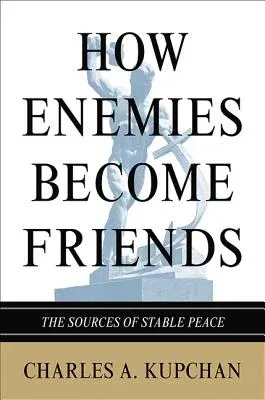How nations move from war to peace
Is the world destined to suffer endless cycles of conflict and war? Can
rival nations become partners and establish a lasting and stable peace?
How Enemies Become Friends provides a bold and innovative account of
how nations escape geopolitical competition and replace hostility with
friendship. Through compelling analysis and rich historical examples
that span the globe and range from the thirteenth century through the
present, foreign policy expert Charles Kupchan explores how adversaries
can transform enmity into amity--and he exposes prevalent myths about
the causes of peace.
Kupchan contends that diplomatic engagement with rivals, far from being
appeasement, is critical to rapprochement between adversaries.
Diplomacy, not economic interdependence, is the currency of peace;
concessions and strategic accommodation promote the mutual trust needed
to build an international society. The nature of regimes matters much
less than commonly thought: countries, including the United States,
should deal with other states based on their foreign policy behavior
rather than on whether they are democracies. Kupchan demonstrates that
similar social orders and similar ethnicities, races, or religions help
nations achieve stable peace. He considers many historical successes and
failures, including the onset of friendship between the United States
and Great Britain in the early twentieth century, the Concert of Europe,
which preserved peace after 1815 but collapsed following revolutions in
1848, and the remarkably close partnership of the Soviet Union and China
in the 1950s, which descended into open rivalry by the 1960s.
In a world where conflict among nations seems inescapable, How Enemies
Become Friends offers critical insights for building lasting peace.

